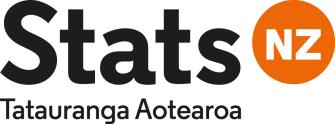
17 May 2021
Jan Rivers
[FYI request #15268 email]
Dear Jan,
Official Information Act request
Thank you for your Official Information Act request on 23 April 2021. We hope the
information included here will provide some useful clarification.
Please can you explain what it means to says that a person’s sex has change over
the course of their lifetime and whether it is the chromosomes, hormones, and
reproductive organs which have caused the change in sex. Please can you advise
the research sources that have been used to support this statement.
Relevant section from the standard:
‘Sex is based on a person’s sex characteristics, such as their chromosomes, hormones, and
reproductive organs. While typically based upon the sex characteristics observed and
recorded at birth or infancy, a person’s sex can change over the course of their lifetime and
may differ from their sex recorded at birth.’
The description in the standard addresses how some people's sex characteristics may
change over time. For example, this may be the case for transgender people who have
undergone gender-affirming treatment. This description is consistent with the previous
statistical standard for sex, which stated:
“In responding to a question on sex, most people are able to classify themselves as either
male or female. A person who has undergone sex reassignment should be classified to that
sex. A person who was of indeterminate sex and who has undergone sex assignment should
be classified to that sex. Someone who is currently undergoing such procedures and living
as the sex that they are taking steps towards would be classified as that sex.”
This definition is also consistent with the sex definition used by the Australian Bureau of
Statistics.
Please can you advise the risk assessment that has been undertaken to support the
following changes:
The change of the meaning of gender to a meaning which incorporates self-identified
gender identity - when gender has a specific meaning in international treaties such as
CEDAW.
The decision to collect self-identified gender by default in areas where the collection
of sex information is mandated by the legislation such as in equal pay agreements.
The decision to allow for the collection of data by gender which is self-identified
gender identity when gender self-identification is not supported by legislation.
Statistical standards provide guidance to any agency or organisation on how best to collect
and report data on a multitude of topics in many different contexts.

We review our statistical standards on a regular basis and update them to advise on
evolving language. Data collected using the updated gender concept will be suitable for
reporting purposes, including those required by CEDAW.
Sex data collected to date has often not specified whether sex or gender is being asked, and
as with most demographic details given by respondents about themselves, there is an
assumed level of self-identification. Clarifying the collection of gender will improve the
consistency of the data collected.
For most people, sex and gender information is the same – so the impact at the point of
collection for these people is minimal. Collection of gender will respect the right for
transgender people to identify as they have chosen, and allow for those who have genders
that are not male or female to be represented. Because gender and sex are the same for
most people, this also means the impact on data is very small. Stats NZ will be collecting
both gender and sex at birth data (the two-step approach) in household surveys and the
2023 Census. This allows us to assess the impact of conceptual changes.
Many New Zealand government agencies already collect gender to meet their own needs.
The gender by default principle aims to increase consistency across the system where data
on sex and/or gender is used. A consistent approach to collection will increase comparability
and the possibility of data integration for the system.
More information:
The Ministry for Women website contains New Zealand’s CEDAW reports:
https://women.govt.nz/about/international/cedaw-reports
And the ‘bringing gender in’ tool outlines the relevance of gender data in areas such as pay
equit
y https://women.govt.nz/gender-tool/policy-issue#section_1
The government guidance on how to measure organisational gender pay gaps can be found
here
https://ssc.govt.nz/assets/SSC-Site-Assets/Workforce-and-Talent-
Management/Organisational-gender-pay-gaps-Measurement-and-analysis-guidelines.pdf
You have the right, by way of complaint to the Office of the Ombudsman under section 28(3)
of the Act, to seek an investigation and review of this response to your request.
Stats NZ intends to publish its response to your request made under the Act on the Stats NZ
website. This letter, with your personal details removed, will be published in its entirety.
Consistent with the Act, publishing responses increases the availability of information to the
public and helps promote balanced public debate.
Yours sincerely,
Matt Phimmavanh
Senior Advisor – Office of the Government Statistician and Chief Executive
Kaitohutohu Matua – Tari Kaimātai Taunga Matua Me Te Tumu Whakahaere Stats NZ Tatauranga Aotearoa
Document Outline


